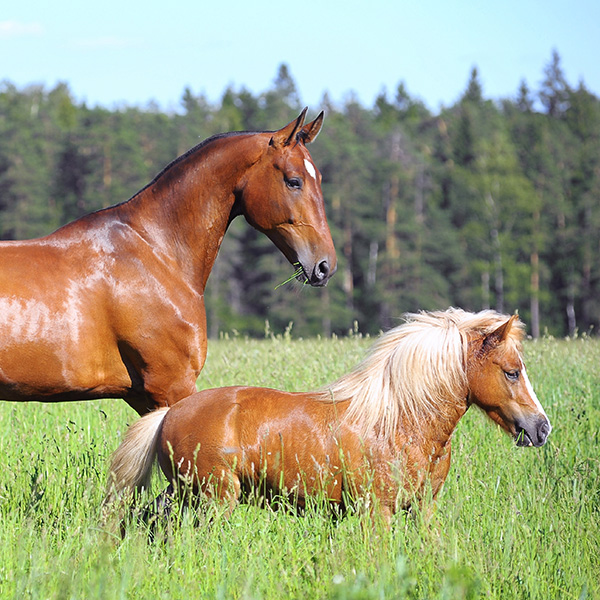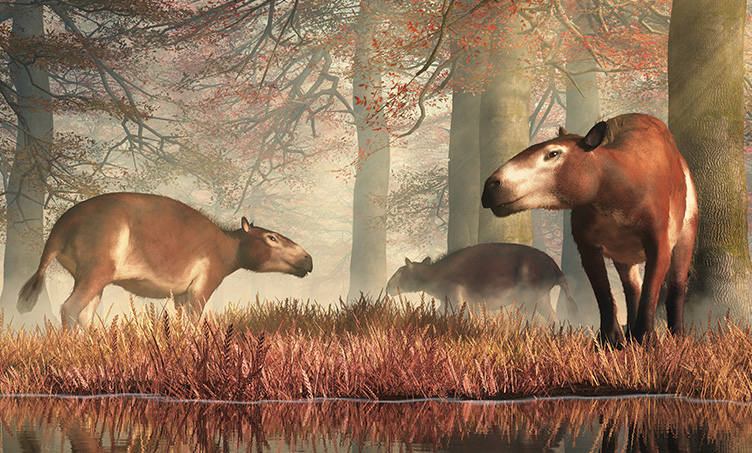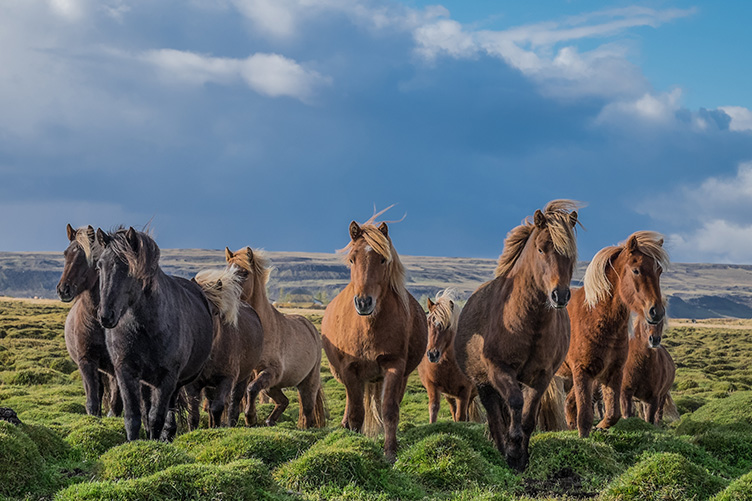
The horse, a majestic symbol of freedom, power, and companionship, boasts a lineage stretching back millions of years. Its captivating story, a testament to adaptation and evolution, reveals a creature far different from the one we know today. This blog post embarks on a fascinating exploration of the horse’s journey, from its humble beginnings to the diverse breeds that grace our world.
From Forest Dweller to Grassland Conqueror

Our tale begins roughly 55 million years ago in the lush forests of North America. The Eohippus, no bigger than a fox, was the earliest known ancestor of the modern horse. This diminutive creature possessed five toes on each foot and a browsing diet, making it more akin to a small, forest-dwelling mammal than the powerful runner we envision today.
Over the course of millions of years, environmental pressures, particularly the rise of grasslands, triggered significant evolutionary changes. The Mesohippus, with its elongated legs and three toes, marked the beginning of a shift towards grazing. Its descendant, the Miohippus, further adapted with a longer body, stronger limbs, and a single central toe supporting its weight – a precursor to the single-hoofed foot we see today.
Merychippus, sporting a three-toed foot, stood taller, showcasing the trend towards increased size and speed. This period also saw the emergence of Hipparion, a diverse group that experimented with different tooth structures, foreshadowing the dietary adaptations to come.
The Birth of Equus and the Great Migration

Around 4 million years ago, a crucial evolutionary leap occurred. Pliohippus, with its single-toed foot and high-crowned teeth suited for abrasive grasses, paved the way for the genus Equus, which includes all modern horses, donkeys, and zebras.
Equus, however, didn’t flourish solely in North America. Roughly 2.5 million years ago, these early horses crossed the Bering Land Bridge, venturing into Asia and subsequently spreading across Europe and Africa. This remarkable migration led to the diversification of Equus, resulting in the distinct lineages of zebras, asses, and the ancestors of modern horses.
The Rise of Domestication and the Shaping of Modern Breeds
The story takes a dramatic turn around 10,000 years ago with the domestication of the horse. From nomadic hunters dependent on wild horses for sustenance, humans gradually shifted towards taming and breeding these animals for transportation, warfare, and agriculture. This marked the beginning of a profound human-equine partnership that continues to shape the landscape of modern horse breeds.
While there aren’t any direct descendants of prehistoric horses walking the earth today, some modern breeds hold the title of being closest relatives to their ancient counterparts. These breeds offer a fascinating glimpse into the past and showcase the influence of natural selection and human intervention on equine evolution.

One strong contender is the Przewalski’s horse, also known as the Takhi. This critically endangered wild horse, native to the steppes of Central Asia, exhibits many physical characteristics reminiscent of prehistoric horses. They possess a stockier build, dun coloration, and primitive markings like a dorsal stripe and zebra-like leg stripes. Genetic analysis suggests they are the last remaining truly wild horse lineage, closely related to the extinct tarpan and potentially ancestral to many domesticated breeds.

Another breed often cited for its prehistoric ties is the Icelandic horse. This unique breed, hailing from Iceland, is believed to be descended from horses brought by Vikings over 1,000 years ago. Icelandic horses retain several primitive traits, including five additional gaits beyond the typical walk, trot, and canter. These unique gaits, believed to be present in early horse ancestors, allow for smooth and efficient movement over challenging terrain.
Selective breeding by humans played a pivotal role in creating the vast array of horse breeds we see today. From the powerful draft horses, crucial for agricultural labor, to the swift Arabian horses prized for their speed and endurance, each breed embodies specific desired traits. This purposeful selection has resulted in a fascinating diversity, showcasing the remarkable plasticity of the equine genome.
Cultural Significance: A Bond Beyond Utility
The horse’s impact extends far beyond its practical uses. Throughout history, horses have held profound cultural significance. They have been depicted in art and literature, serving as symbols of war, power, and nobility. In various cultures, they are revered for their spiritual significance and deep connection to the natural world.
A Journey Through Time
The evolution of the horse is a captivating tale of adaptation, migration, and the profound influence of human intervention. From the unassuming Eohippus to the diverse breeds that grace our world today, the horse’s journey reminds us of the power of evolution and the enduring bond humans share with these magnificent creatures.
This blog post merely scratches the surface of this intricate story. As research continues to unveil new fossils and insights, our understanding of the horse’s remarkable evolution continues to grow. So, the next time you encounter a horse, take a moment to appreciate the incredible journey it represents, a testament to the power of adaptation and the enduring connection between humans and the animal kingdom.
